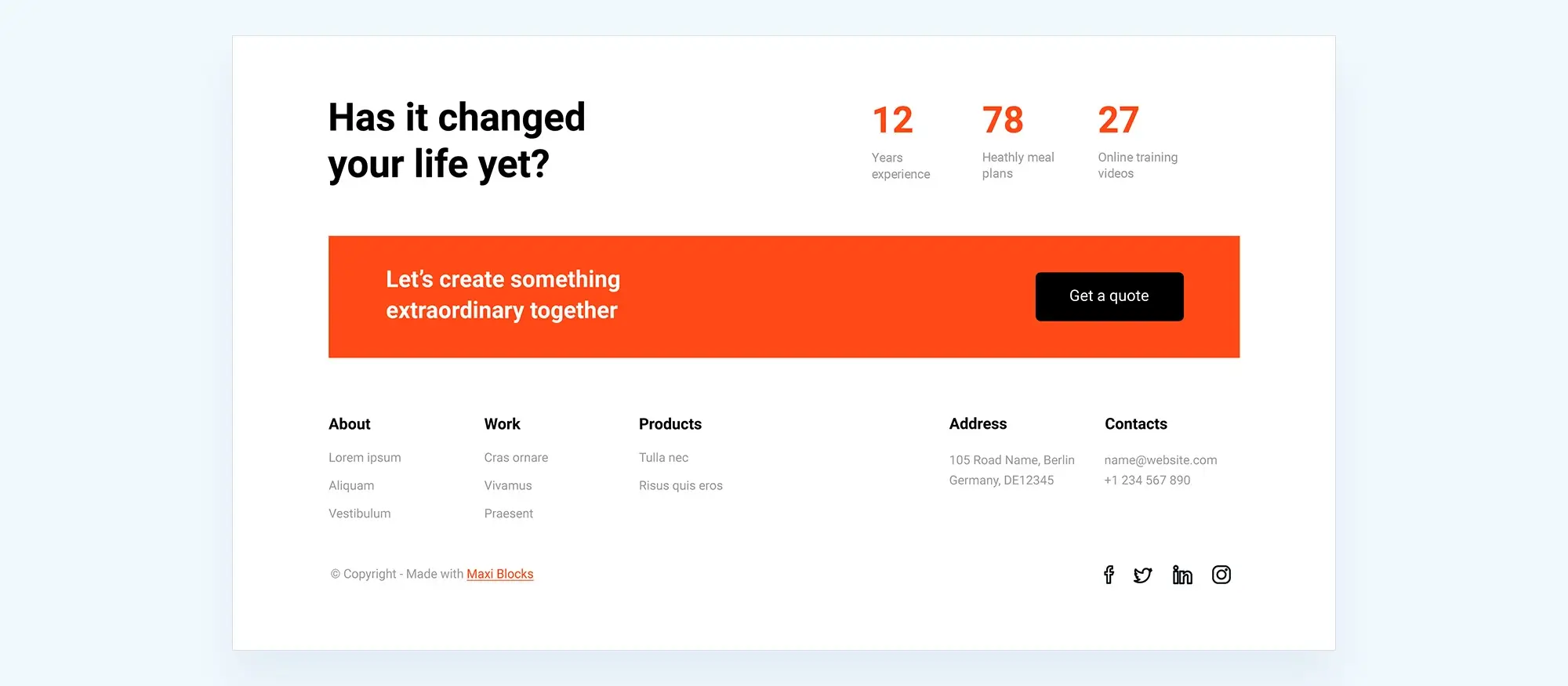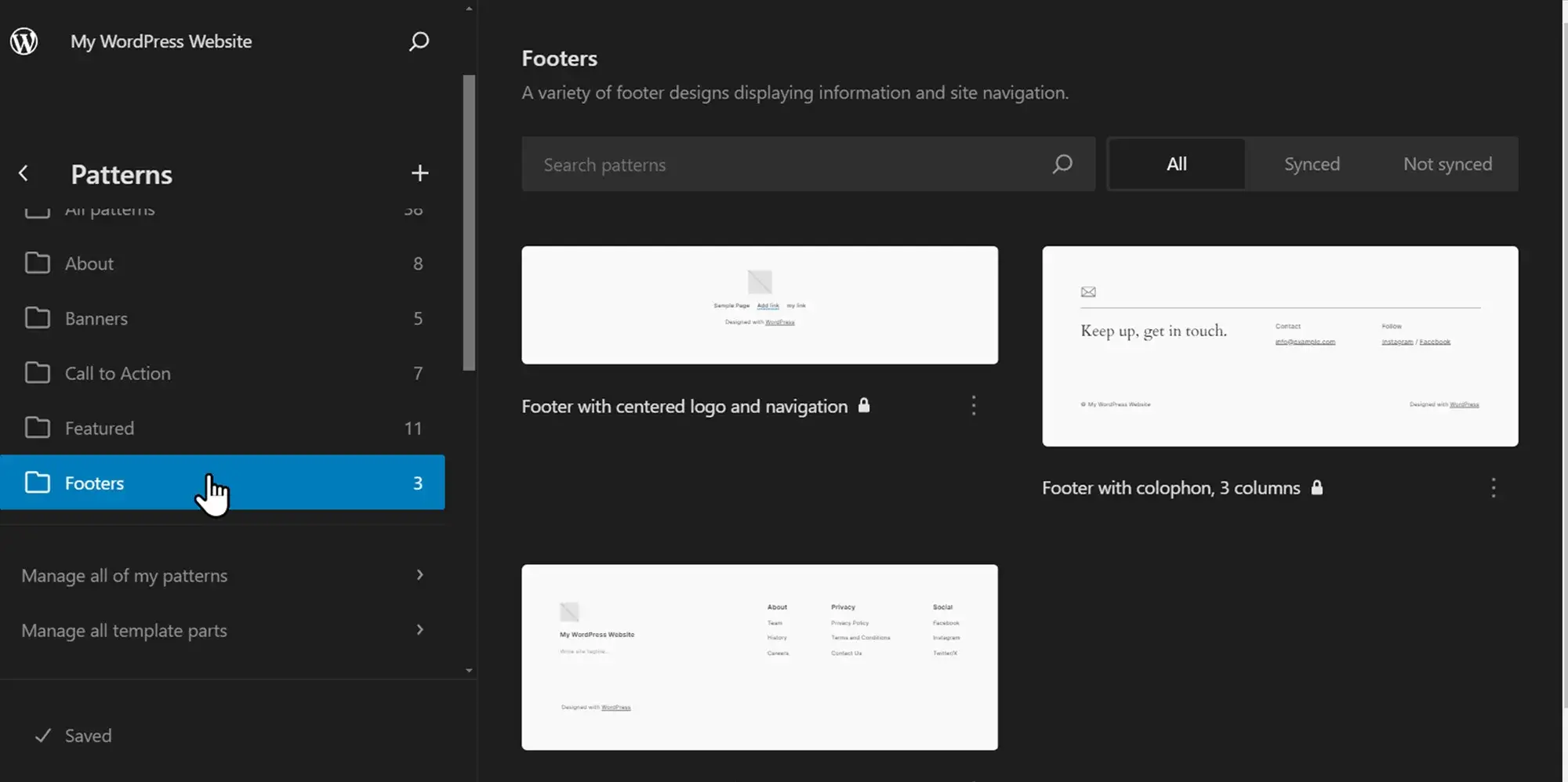
Category: Pure footer
Try MaxiBlocks for free with 500+ library assets including basic templates. No account required. Free page builder, theme and updates included. Start now
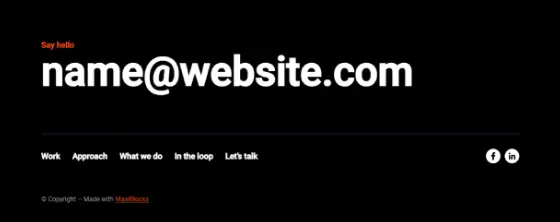
Best footer designs for WordPress, Custom footer design, Footer animation effects, Footer background color schemes, Footer background design, Footer background image design, Footer background image WordPress, Footer background transparency, Footer button design, Footer button styles, Footer column layout options, Footer contact details, Footer content examples, Footer copyright text ideas, Footer CTA (Call to Action), Footer customization in Elementor, Footer customization in Gutenberg, Footer design, Footer design best practices, Footer design for agency websites, Footer design for creative portfolios, Footer design for small business, Footer design inspiration, Footer design patterns, Footer design templates free download, Footer design trends 2024, Footer design with branding, Footer examples for WordPress, Footer for affiliate marketing websites, Footer for blog websites, Footer for business websites, Footer for charity websites, Footer for construction websites, Footer for corporate websites, Footer for ecommerce website, Footer for educational websites, Footer for event websites, Footer for fashion websites, Footer for fitness websites, Footer for food and drink websites, Footer for hotel and travel booking websites, Footer for landing pages, Footer for local business websites, Footer for membership sites, Footer for mobile responsive sites, Footer for multi-language websites, Footer for news websites, Footer for non-profit websites, Footer for one-page websites, Footer for online stores, Footer for personal blog, Footer for photography websites, Footer for portfolio websites, Footer for product pages, Footer for real estate websites, Footer for restaurant websites, Footer for SaaS websites, Footer for travel websites, Footer for WordPress ecommerce themes, Footer form design, Footer height customization, Footer HTML and CSS customization, Footer icon design, Footer layout ideas, Footer layout inspiration, Footer link alignment, Footer link hierarchy, Footer link styles, Footer links to privacy policy and terms of service, Footer logo placement, Footer menu customization, Footer navigation bar, Footer padding settings, Footer plugin for WordPress, Footer plugin for WordPress free, Footer positioning settings, Footer SEO optimization, Footer social media feed integration, Footer social media icons, Footer spacing settings, Footer style customization, Footer styles for Maxi, Footer template for websites, Footer text alignment options, Footer text animation, Footer text color options, Footer typography customization, Footer widgets layout, Footer widgets WordPress, Footer with address and contact info, Footer with animated icons, Footer with breadcrumb navigation, Footer with call to action buttons, Footer with clickable icons, Footer with custom CSS, Footer with custom fonts, Footer with custom HTML, Footer with custom shapes, Footer with custom widgets, Footer with dynamic content, Footer with email subscription, Footer with FAQ section, Footer with Google Maps, Footer with hover animation, Footer with hover effect, Footer with interactive elements, Footer with legal disclaimers, Footer with logo and contact info, Footer with map integration, Footer with media gallery, Footer with multilingual support, Footer with multiple columns, Footer with newsletter signup form, Footer with parallax scrolling effect, Footer with payment gateway icons, Footer with payment method icons, Footer with product showcase, Footer with recent blog posts, Footer with scroll effects, Footer with scroll to top button, Footer with search bar, Footer with sitemap, Footer with social feed, Footer with social links, Footer with testimonial section, Footer with user-generated content., Footer with video background, How to add footer to WordPress, How to add social media icons to footer, How to create a footer in WordPress, Minimalist footer design, Responsive footer design, Sticky footer WordPress plugin, WordPress, WordPress footer
Pure Footer Dark PFD-PRO-87
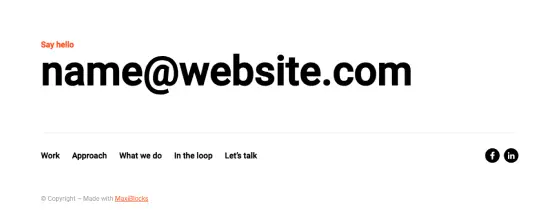
Best footer designs for WordPress, Custom footer design, Footer animation effects, Footer background color schemes, Footer background design, Footer background image design, Footer background image WordPress, Footer background transparency, Footer button design, Footer button styles, Footer column layout options, Footer contact details, Footer content examples, Footer copyright text ideas, Footer CTA (Call to Action), Footer customization in Elementor, Footer customization in Gutenberg, Footer design, Footer design best practices, Footer design for agency websites, Footer design for creative portfolios, Footer design for small business, Footer design inspiration, Footer design patterns, Footer design templates free download, Footer design trends 2024, Footer design with branding, Footer examples for WordPress, Footer for affiliate marketing websites, Footer for blog websites, Footer for business websites, Footer for charity websites, Footer for construction websites, Footer for corporate websites, Footer for ecommerce website, Footer for educational websites, Footer for event websites, Footer for fashion websites, Footer for fitness websites, Footer for food and drink websites, Footer for hotel and travel booking websites, Footer for landing pages, Footer for local business websites, Footer for membership sites, Footer for mobile responsive sites, Footer for multi-language websites, Footer for news websites, Footer for non-profit websites, Footer for one-page websites, Footer for online stores, Footer for personal blog, Footer for photography websites, Footer for portfolio websites, Footer for product pages, Footer for real estate websites, Footer for restaurant websites, Footer for SaaS websites, Footer for travel websites, Footer for WordPress ecommerce themes, Footer form design, Footer height customization, Footer HTML and CSS customization, Footer icon design, Footer layout ideas, Footer layout inspiration, Footer link alignment, Footer link hierarchy, Footer link styles, Footer links to privacy policy and terms of service, Footer logo placement, Footer menu customization, Footer navigation bar, Footer padding settings, Footer plugin for WordPress, Footer plugin for WordPress free, Footer positioning settings, Footer SEO optimization, Footer social media feed integration, Footer social media icons, Footer spacing settings, Footer style customization, Footer styles for Maxi, Footer template for websites, Footer text alignment options, Footer text animation, Footer text color options, Footer typography customization, Footer widgets layout, Footer widgets WordPress, Footer with address and contact info, Footer with animated icons, Footer with breadcrumb navigation, Footer with call to action buttons, Footer with clickable icons, Footer with custom CSS, Footer with custom fonts, Footer with custom HTML, Footer with custom shapes, Footer with custom widgets, Footer with dynamic content, Footer with email subscription, Footer with FAQ section, Footer with Google Maps, Footer with hover animation, Footer with hover effect, Footer with interactive elements, Footer with legal disclaimers, Footer with logo and contact info, Footer with map integration, Footer with media gallery, Footer with multilingual support, Footer with multiple columns, Footer with newsletter signup form, Footer with parallax scrolling effect, Footer with payment gateway icons, Footer with payment method icons, Footer with product showcase, Footer with recent blog posts, Footer with scroll effects, Footer with scroll to top button, Footer with search bar, Footer with sitemap, Footer with social feed, Footer with social links, Footer with testimonial section, Footer with user-generated content., Footer with video background, How to add footer to WordPress, How to add social media icons to footer, How to create a footer in WordPress, Minimalist footer design, Responsive footer design, Sticky footer WordPress plugin, WordPress, WordPress footer
Pure Footer Light PFL-PRO-87
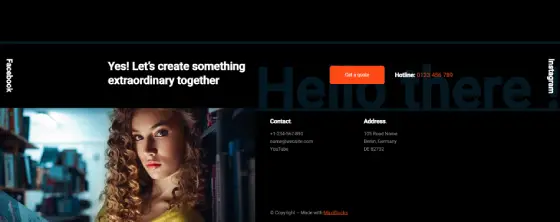
Best footer designs for WordPress, Custom footer design, Footer animation effects, Footer background color schemes, Footer background design, Footer background image design, Footer background image WordPress, Footer background transparency, Footer button design, Footer button styles, Footer column layout options, Footer contact details, Footer content examples, Footer copyright text ideas, Footer CTA (Call to Action), Footer customization in Elementor, Footer customization in Gutenberg, Footer design, Footer design best practices, Footer design for agency websites, Footer design for creative portfolios, Footer design for small business, Footer design inspiration, Footer design patterns, Footer design templates free download, Footer design trends 2024, Footer design with branding, Footer examples for WordPress, Footer for affiliate marketing websites, Footer for blog websites, Footer for business websites, Footer for charity websites, Footer for construction websites, Footer for corporate websites, Footer for ecommerce website, Footer for educational websites, Footer for event websites, Footer for fashion websites, Footer for fitness websites, Footer for food and drink websites, Footer for hotel and travel booking websites, Footer for landing pages, Footer for local business websites, Footer for membership sites, Footer for mobile responsive sites, Footer for multi-language websites, Footer for news websites, Footer for non-profit websites, Footer for one-page websites, Footer for online stores, Footer for personal blog, Footer for photography websites, Footer for portfolio websites, Footer for product pages, Footer for real estate websites, Footer for restaurant websites, Footer for SaaS websites, Footer for travel websites, Footer for WordPress ecommerce themes, Footer form design, Footer height customization, Footer HTML and CSS customization, Footer icon design, Footer layout ideas, Footer layout inspiration, Footer link alignment, Footer link hierarchy, Footer link styles, Footer links to privacy policy and terms of service, Footer logo placement, Footer menu customization, Footer navigation bar, Footer padding settings, Footer plugin for WordPress, Footer plugin for WordPress free, Footer positioning settings, Footer SEO optimization, Footer social media feed integration, Footer social media icons, Footer spacing settings, Footer style customization, Footer styles for Maxi, Footer template for websites, Footer text alignment options, Footer text animation, Footer text color options, Footer typography customization, Footer widgets layout, Footer widgets WordPress, Footer with address and contact info, Footer with animated icons, Footer with breadcrumb navigation, Footer with call to action buttons, Footer with clickable icons, Footer with custom CSS, Footer with custom fonts, Footer with custom HTML, Footer with custom shapes, Footer with custom widgets, Footer with dynamic content, Footer with email subscription, Footer with FAQ section, Footer with Google Maps, Footer with hover animation, Footer with hover effect, Footer with interactive elements, Footer with legal disclaimers, Footer with logo and contact info, Footer with map integration, Footer with media gallery, Footer with multilingual support, Footer with multiple columns, Footer with newsletter signup form, Footer with parallax scrolling effect, Footer with payment gateway icons, Footer with payment method icons, Footer with product showcase, Footer with recent blog posts, Footer with scroll effects, Footer with scroll to top button, Footer with search bar, Footer with sitemap, Footer with social feed, Footer with social links, Footer with testimonial section, Footer with user-generated content., Footer with video background, How to add footer to WordPress, How to add social media icons to footer, How to create a footer in WordPress, Minimalist footer design, Responsive footer design, Sticky footer WordPress plugin, WordPress, WordPress footer
Pure Footer Dark PFD-PRO-44
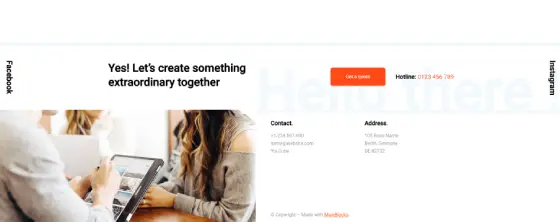
Best footer designs for WordPress, Custom footer design, Footer animation effects, Footer background color schemes, Footer background design, Footer background image design, Footer background image WordPress, Footer background transparency, Footer button design, Footer button styles, Footer column layout options, Footer contact details, Footer content examples, Footer copyright text ideas, Footer CTA (Call to Action), Footer customization in Elementor, Footer customization in Gutenberg, Footer design, Footer design best practices, Footer design for agency websites, Footer design for creative portfolios, Footer design for small business, Footer design inspiration, Footer design patterns, Footer design templates free download, Footer design trends 2024, Footer design with branding, Footer examples for WordPress, Footer for affiliate marketing websites, Footer for blog websites, Footer for business websites, Footer for charity websites, Footer for construction websites, Footer for corporate websites, Footer for ecommerce website, Footer for educational websites, Footer for event websites, Footer for fashion websites, Footer for fitness websites, Footer for food and drink websites, Footer for hotel and travel booking websites, Footer for landing pages, Footer for local business websites, Footer for membership sites, Footer for mobile responsive sites, Footer for multi-language websites, Footer for news websites, Footer for non-profit websites, Footer for one-page websites, Footer for online stores, Footer for personal blog, Footer for photography websites, Footer for portfolio websites, Footer for product pages, Footer for real estate websites, Footer for restaurant websites, Footer for SaaS websites, Footer for travel websites, Footer for WordPress ecommerce themes, Footer form design, Footer height customization, Footer HTML and CSS customization, Footer icon design, Footer layout ideas, Footer layout inspiration, Footer link alignment, Footer link hierarchy, Footer link styles, Footer links to privacy policy and terms of service, Footer logo placement, Footer menu customization, Footer navigation bar, Footer padding settings, Footer plugin for WordPress, Footer plugin for WordPress free, Footer positioning settings, Footer SEO optimization, Footer social media feed integration, Footer social media icons, Footer spacing settings, Footer style customization, Footer styles for Maxi, Footer template for websites, Footer text alignment options, Footer text animation, Footer text color options, Footer typography customization, Footer widgets layout, Footer widgets WordPress, Footer with address and contact info, Footer with animated icons, Footer with breadcrumb navigation, Footer with call to action buttons, Footer with clickable icons, Footer with custom CSS, Footer with custom fonts, Footer with custom HTML, Footer with custom shapes, Footer with custom widgets, Footer with dynamic content, Footer with email subscription, Footer with FAQ section, Footer with Google Maps, Footer with hover animation, Footer with hover effect, Footer with interactive elements, Footer with legal disclaimers, Footer with logo and contact info, Footer with map integration, Footer with media gallery, Footer with multilingual support, Footer with multiple columns, Footer with newsletter signup form, Footer with parallax scrolling effect, Footer with payment gateway icons, Footer with payment method icons, Footer with product showcase, Footer with recent blog posts, Footer with scroll effects, Footer with scroll to top button, Footer with search bar, Footer with sitemap, Footer with social feed, Footer with social links, Footer with testimonial section, Footer with user-generated content., Footer with video background, How to add footer to WordPress, How to add social media icons to footer, How to create a footer in WordPress, Minimalist footer design, Responsive footer design, Sticky footer WordPress plugin, WordPress, WordPress footer
Pure Footer Light PFL-PRO-44
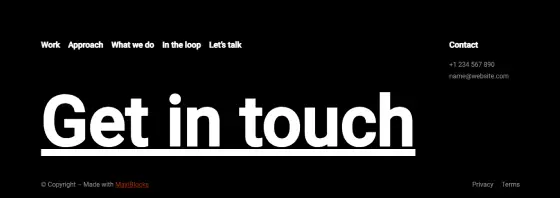
Best footer designs for WordPress, Custom footer design, Footer animation effects, Footer background color schemes, Footer background design, Footer background image design, Footer background image WordPress, Footer background transparency, Footer button design, Footer button styles, Footer column layout options, Footer contact details, Footer content examples, Footer copyright text ideas, Footer CTA (Call to Action), Footer customization in Elementor, Footer customization in Gutenberg, Footer design, Footer design best practices, Footer design for agency websites, Footer design for creative portfolios, Footer design for small business, Footer design inspiration, Footer design patterns, Footer design templates free download, Footer design trends 2024, Footer design with branding, Footer examples for WordPress, Footer for affiliate marketing websites, Footer for blog websites, Footer for business websites, Footer for charity websites, Footer for construction websites, Footer for corporate websites, Footer for ecommerce website, Footer for educational websites, Footer for event websites, Footer for fashion websites, Footer for fitness websites, Footer for food and drink websites, Footer for hotel and travel booking websites, Footer for landing pages, Footer for local business websites, Footer for membership sites, Footer for mobile responsive sites, Footer for multi-language websites, Footer for news websites, Footer for non-profit websites, Footer for one-page websites, Footer for online stores, Footer for personal blog, Footer for photography websites, Footer for portfolio websites, Footer for product pages, Footer for real estate websites, Footer for restaurant websites, Footer for SaaS websites, Footer for travel websites, Footer for WordPress ecommerce themes, Footer form design, Footer height customization, Footer HTML and CSS customization, Footer icon design, Footer layout ideas, Footer layout inspiration, Footer link alignment, Footer link hierarchy, Footer link styles, Footer links to privacy policy and terms of service, Footer logo placement, Footer menu customization, Footer navigation bar, Footer padding settings, Footer plugin for WordPress, Footer plugin for WordPress free, Footer positioning settings, Footer SEO optimization, Footer social media feed integration, Footer social media icons, Footer spacing settings, Footer style customization, Footer styles for Maxi, Footer template for websites, Footer text alignment options, Footer text animation, Footer text color options, Footer typography customization, Footer widgets layout, Footer widgets WordPress, Footer with address and contact info, Footer with animated icons, Footer with breadcrumb navigation, Footer with call to action buttons, Footer with clickable icons, Footer with custom CSS, Footer with custom fonts, Footer with custom HTML, Footer with custom shapes, Footer with custom widgets, Footer with dynamic content, Footer with email subscription, Footer with FAQ section, Footer with Google Maps, Footer with hover animation, Footer with hover effect, Footer with interactive elements, Footer with legal disclaimers, Footer with logo and contact info, Footer with map integration, Footer with media gallery, Footer with multilingual support, Footer with multiple columns, Footer with newsletter signup form, Footer with parallax scrolling effect, Footer with payment gateway icons, Footer with payment method icons, Footer with product showcase, Footer with recent blog posts, Footer with scroll effects, Footer with scroll to top button, Footer with search bar, Footer with sitemap, Footer with social feed, Footer with social links, Footer with testimonial section, Footer with user-generated content., Footer with video background, How to add footer to WordPress, How to add social media icons to footer, How to create a footer in WordPress, Minimalist footer design, Responsive footer design, Sticky footer WordPress plugin, WordPress, WordPress footer
Pure Footer Dark PFD-PRO-99
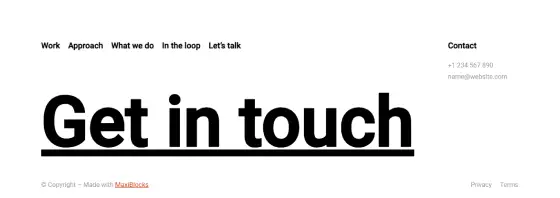
Best footer designs for WordPress, Custom footer design, Footer animation effects, Footer background color schemes, Footer background design, Footer background image design, Footer background image WordPress, Footer background transparency, Footer button design, Footer button styles, Footer column layout options, Footer contact details, Footer content examples, Footer copyright text ideas, Footer CTA (Call to Action), Footer customization in Elementor, Footer customization in Gutenberg, Footer design, Footer design best practices, Footer design for agency websites, Footer design for creative portfolios, Footer design for small business, Footer design inspiration, Footer design patterns, Footer design templates free download, Footer design trends 2024, Footer design with branding, Footer examples for WordPress, Footer for affiliate marketing websites, Footer for blog websites, Footer for business websites, Footer for charity websites, Footer for construction websites, Footer for corporate websites, Footer for ecommerce website, Footer for educational websites, Footer for event websites, Footer for fashion websites, Footer for fitness websites, Footer for food and drink websites, Footer for hotel and travel booking websites, Footer for landing pages, Footer for local business websites, Footer for membership sites, Footer for mobile responsive sites, Footer for multi-language websites, Footer for news websites, Footer for non-profit websites, Footer for one-page websites, Footer for online stores, Footer for personal blog, Footer for photography websites, Footer for portfolio websites, Footer for product pages, Footer for real estate websites, Footer for restaurant websites, Footer for SaaS websites, Footer for travel websites, Footer for WordPress ecommerce themes, Footer form design, Footer height customization, Footer HTML and CSS customization, Footer icon design, Footer layout ideas, Footer layout inspiration, Footer link alignment, Footer link hierarchy, Footer link styles, Footer links to privacy policy and terms of service, Footer logo placement, Footer menu customization, Footer navigation bar, Footer padding settings, Footer plugin for WordPress, Footer plugin for WordPress free, Footer positioning settings, Footer SEO optimization, Footer social media feed integration, Footer social media icons, Footer spacing settings, Footer style customization, Footer styles for Maxi, Footer template for websites, Footer text alignment options, Footer text animation, Footer text color options, Footer typography customization, Footer widgets layout, Footer widgets WordPress, Footer with address and contact info, Footer with animated icons, Footer with breadcrumb navigation, Footer with call to action buttons, Footer with clickable icons, Footer with custom CSS, Footer with custom fonts, Footer with custom HTML, Footer with custom shapes, Footer with custom widgets, Footer with dynamic content, Footer with email subscription, Footer with FAQ section, Footer with Google Maps, Footer with hover animation, Footer with hover effect, Footer with interactive elements, Footer with legal disclaimers, Footer with logo and contact info, Footer with map integration, Footer with media gallery, Footer with multilingual support, Footer with multiple columns, Footer with newsletter signup form, Footer with parallax scrolling effect, Footer with payment gateway icons, Footer with payment method icons, Footer with product showcase, Footer with recent blog posts, Footer with scroll effects, Footer with scroll to top button, Footer with search bar, Footer with sitemap, Footer with social feed, Footer with social links, Footer with testimonial section, Footer with user-generated content., Footer with video background, How to add footer to WordPress, How to add social media icons to footer, How to create a footer in WordPress, Minimalist footer design, Responsive footer design, Sticky footer WordPress plugin, WordPress, WordPress footer
Pure Footer Light PFL-PRO-99

Best footer designs for WordPress, Custom footer design, Footer animation effects, Footer background color schemes, Footer background design, Footer background image design, Footer background image WordPress, Footer background transparency, Footer button design, Footer button styles, Footer column layout options, Footer contact details, Footer content examples, Footer copyright text ideas, Footer CTA (Call to Action), Footer customization in Elementor, Footer customization in Gutenberg, Footer design, Footer design best practices, Footer design for agency websites, Footer design for creative portfolios, Footer design for small business, Footer design inspiration, Footer design patterns, Footer design templates free download, Footer design trends 2024, Footer design with branding, Footer examples for WordPress, Footer for affiliate marketing websites, Footer for blog websites, Footer for business websites, Footer for charity websites, Footer for construction websites, Footer for corporate websites, Footer for ecommerce website, Footer for educational websites, Footer for event websites, Footer for fashion websites, Footer for fitness websites, Footer for food and drink websites, Footer for hotel and travel booking websites, Footer for landing pages, Footer for local business websites, Footer for membership sites, Footer for mobile responsive sites, Footer for multi-language websites, Footer for news websites, Footer for non-profit websites, Footer for one-page websites, Footer for online stores, Footer for personal blog, Footer for photography websites, Footer for portfolio websites, Footer for product pages, Footer for real estate websites, Footer for restaurant websites, Footer for SaaS websites, Footer for travel websites, Footer for WordPress ecommerce themes, Footer form design, Footer height customization, Footer HTML and CSS customization, Footer icon design, Footer layout ideas, Footer layout inspiration, Footer link alignment, Footer link hierarchy, Footer link styles, Footer links to privacy policy and terms of service, Footer logo placement, Footer menu customization, Footer navigation bar, Footer padding settings, Footer plugin for WordPress, Footer plugin for WordPress free, Footer positioning settings, Footer SEO optimization, Footer social media feed integration, Footer social media icons, Footer spacing settings, Footer style customization, Footer styles for Maxi, Footer template for websites, Footer text alignment options, Footer text animation, Footer text color options, Footer typography customization, Footer widgets layout, Footer widgets WordPress, Footer with address and contact info, Footer with animated icons, Footer with breadcrumb navigation, Footer with call to action buttons, Footer with clickable icons, Footer with custom CSS, Footer with custom fonts, Footer with custom HTML, Footer with custom shapes, Footer with custom widgets, Footer with dynamic content, Footer with email subscription, Footer with FAQ section, Footer with Google Maps, Footer with hover animation, Footer with hover effect, Footer with interactive elements, Footer with legal disclaimers, Footer with logo and contact info, Footer with map integration, Footer with media gallery, Footer with multilingual support, Footer with multiple columns, Footer with newsletter signup form, Footer with parallax scrolling effect, Footer with payment gateway icons, Footer with payment method icons, Footer with product showcase, Footer with recent blog posts, Footer with scroll effects, Footer with scroll to top button, Footer with search bar, Footer with sitemap, Footer with social feed, Footer with social links, Footer with testimonial section, Footer with user-generated content., Footer with video background, How to add footer to WordPress, How to add social media icons to footer, How to create a footer in WordPress, Minimalist footer design, Responsive footer design, Sticky footer WordPress plugin, WordPress, WordPress footer
Pure Footer Dark PFD-PRO-93

Best footer designs for WordPress, Custom footer design, Footer animation effects, Footer background color schemes, Footer background design, Footer background image design, Footer background image WordPress, Footer background transparency, Footer button design, Footer button styles, Footer column layout options, Footer contact details, Footer content examples, Footer copyright text ideas, Footer CTA (Call to Action), Footer customization in Elementor, Footer customization in Gutenberg, Footer design, Footer design best practices, Footer design for agency websites, Footer design for creative portfolios, Footer design for small business, Footer design inspiration, Footer design patterns, Footer design templates free download, Footer design trends 2024, Footer design with branding, Footer examples for WordPress, Footer for affiliate marketing websites, Footer for blog websites, Footer for business websites, Footer for charity websites, Footer for construction websites, Footer for corporate websites, Footer for ecommerce website, Footer for educational websites, Footer for event websites, Footer for fashion websites, Footer for fitness websites, Footer for food and drink websites, Footer for hotel and travel booking websites, Footer for landing pages, Footer for local business websites, Footer for membership sites, Footer for mobile responsive sites, Footer for multi-language websites, Footer for news websites, Footer for non-profit websites, Footer for one-page websites, Footer for online stores, Footer for personal blog, Footer for photography websites, Footer for portfolio websites, Footer for product pages, Footer for real estate websites, Footer for restaurant websites, Footer for SaaS websites, Footer for travel websites, Footer for WordPress ecommerce themes, Footer form design, Footer height customization, Footer HTML and CSS customization, Footer icon design, Footer layout ideas, Footer layout inspiration, Footer link alignment, Footer link hierarchy, Footer link styles, Footer links to privacy policy and terms of service, Footer logo placement, Footer menu customization, Footer navigation bar, Footer padding settings, Footer plugin for WordPress, Footer plugin for WordPress free, Footer positioning settings, Footer SEO optimization, Footer social media feed integration, Footer social media icons, Footer spacing settings, Footer style customization, Footer styles for Maxi, Footer template for websites, Footer text alignment options, Footer text animation, Footer text color options, Footer typography customization, Footer widgets layout, Footer widgets WordPress, Footer with address and contact info, Footer with animated icons, Footer with breadcrumb navigation, Footer with call to action buttons, Footer with clickable icons, Footer with custom CSS, Footer with custom fonts, Footer with custom HTML, Footer with custom shapes, Footer with custom widgets, Footer with dynamic content, Footer with email subscription, Footer with FAQ section, Footer with Google Maps, Footer with hover animation, Footer with hover effect, Footer with interactive elements, Footer with legal disclaimers, Footer with logo and contact info, Footer with map integration, Footer with media gallery, Footer with multilingual support, Footer with multiple columns, Footer with newsletter signup form, Footer with parallax scrolling effect, Footer with payment gateway icons, Footer with payment method icons, Footer with product showcase, Footer with recent blog posts, Footer with scroll effects, Footer with scroll to top button, Footer with search bar, Footer with sitemap, Footer with social feed, Footer with social links, Footer with testimonial section, Footer with user-generated content., Footer with video background, How to add footer to WordPress, How to add social media icons to footer, How to create a footer in WordPress, Minimalist footer design, Responsive footer design, Sticky footer WordPress plugin, WordPress, WordPress footer
Pure Footer Light PFL-PRO-93

Best footer designs for WordPress, Custom footer design, Footer animation effects, Footer background color schemes, Footer background design, Footer background image design, Footer background image WordPress, Footer background transparency, Footer button design, Footer button styles, Footer column layout options, Footer contact details, Footer content examples, Footer copyright text ideas, Footer CTA (Call to Action), Footer customization in Elementor, Footer customization in Gutenberg, Footer design, Footer design best practices, Footer design for agency websites, Footer design for creative portfolios, Footer design for small business, Footer design inspiration, Footer design patterns, Footer design templates free download, Footer design trends 2024, Footer design with branding, Footer examples for WordPress, Footer for affiliate marketing websites, Footer for blog websites, Footer for business websites, Footer for charity websites, Footer for construction websites, Footer for corporate websites, Footer for ecommerce website, Footer for educational websites, Footer for event websites, Footer for fashion websites, Footer for fitness websites, Footer for food and drink websites, Footer for hotel and travel booking websites, Footer for landing pages, Footer for local business websites, Footer for membership sites, Footer for mobile responsive sites, Footer for multi-language websites, Footer for news websites, Footer for non-profit websites, Footer for one-page websites, Footer for online stores, Footer for personal blog, Footer for photography websites, Footer for portfolio websites, Footer for product pages, Footer for real estate websites, Footer for restaurant websites, Footer for SaaS websites, Footer for travel websites, Footer for WordPress ecommerce themes, Footer form design, Footer height customization, Footer HTML and CSS customization, Footer icon design, Footer layout ideas, Footer layout inspiration, Footer link alignment, Footer link hierarchy, Footer link styles, Footer links to privacy policy and terms of service, Footer logo placement, Footer menu customization, Footer navigation bar, Footer padding settings, Footer plugin for WordPress, Footer plugin for WordPress free, Footer positioning settings, Footer SEO optimization, Footer social media feed integration, Footer social media icons, Footer spacing settings, Footer style customization, Footer styles for Maxi, Footer template for websites, Footer text alignment options, Footer text animation, Footer text color options, Footer typography customization, Footer widgets layout, Footer widgets WordPress, Footer with address and contact info, Footer with animated icons, Footer with breadcrumb navigation, Footer with call to action buttons, Footer with clickable icons, Footer with custom CSS, Footer with custom fonts, Footer with custom HTML, Footer with custom shapes, Footer with custom widgets, Footer with dynamic content, Footer with email subscription, Footer with FAQ section, Footer with Google Maps, Footer with hover animation, Footer with hover effect, Footer with interactive elements, Footer with legal disclaimers, Footer with logo and contact info, Footer with map integration, Footer with media gallery, Footer with multilingual support, Footer with multiple columns, Footer with newsletter signup form, Footer with parallax scrolling effect, Footer with payment gateway icons, Footer with payment method icons, Footer with product showcase, Footer with recent blog posts, Footer with scroll effects, Footer with scroll to top button, Footer with search bar, Footer with sitemap, Footer with social feed, Footer with social links, Footer with testimonial section, Footer with user-generated content., Footer with video background, How to add footer to WordPress, How to add social media icons to footer, How to create a footer in WordPress, Minimalist footer design, Responsive footer design, Sticky footer WordPress plugin, WordPress, WordPress footer
Pure Footer Dark PFD-PRO-62
Build like a pro


